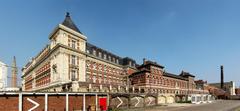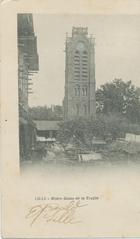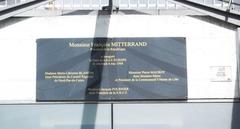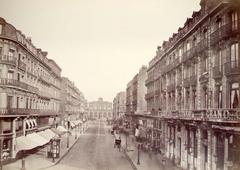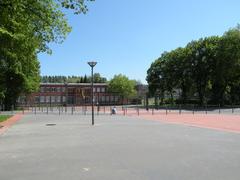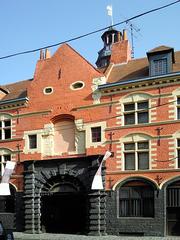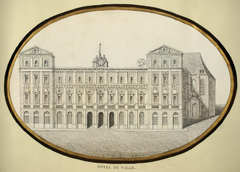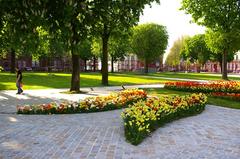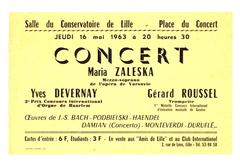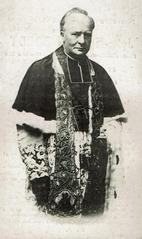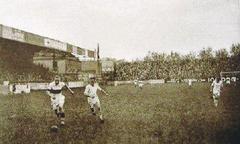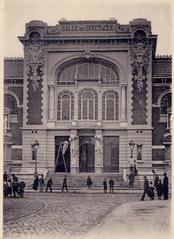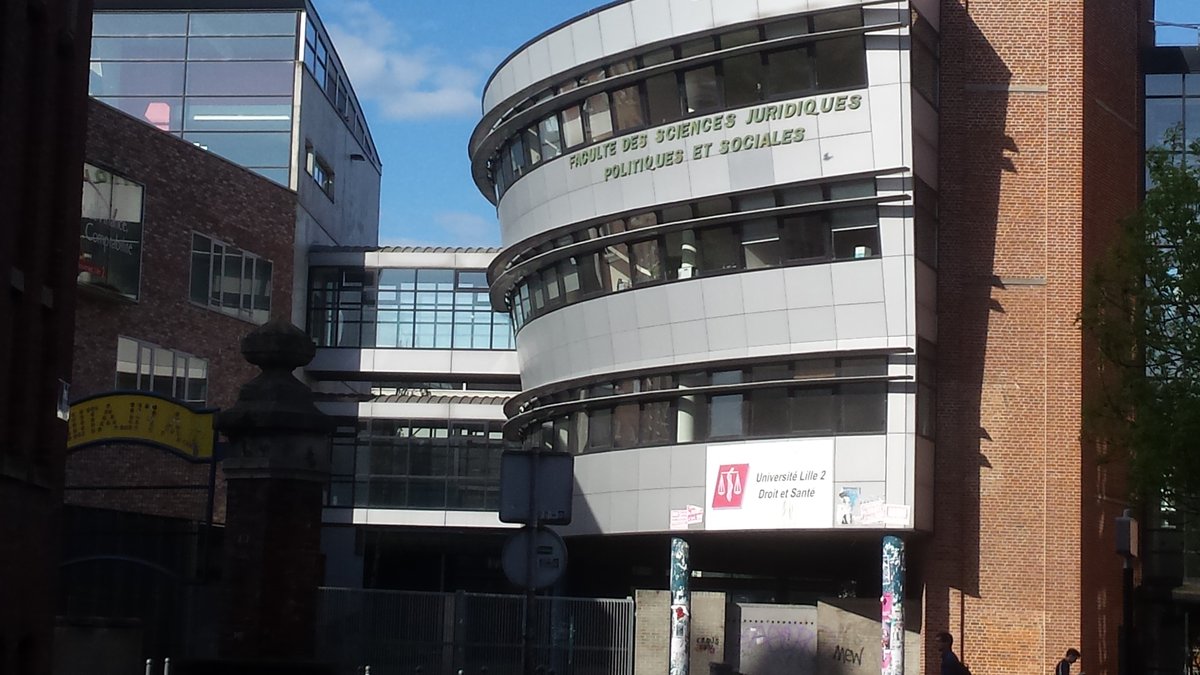
Lille University Hospital Centre Hospitalier Régional Universitaire De Lille
Lille University Hospital Visiting Hours, Tickets, and Visitor Information
Date: 15/06/2025
Introduction to Lille University Hospital
Lille University Hospital, officially known as the Centre Hospitalier Régional Universitaire de Lille (CHU de Lille), is a landmark institution in Northern Europe. With a rich history dating back to the University of Douai in 1559, CHU de Lille stands at the intersection of tradition and innovation. As one of Europe’s largest university hospital complexes—comprising 14 specialist hospitals and numerous research facilities—it serves approximately six million people in the Hauts-de-France region. The hospital is internationally recognized for its clinical excellence, prolific scientific research, and educational leadership. Visitors, whether medical professionals, students, or tourists, will encounter not just advanced medical facilities but also a site that embodies the evolution of European healthcare and urban history.
This guide provides comprehensive and current information for anyone planning a visit to Lille University Hospital. It details visiting hours, ticketing and tour policies, accessibility, and nearby attractions. The hospital’s role as a leading research and educational hub—anchored by its affiliation with the Henri Warembourg Faculty of Medicine and the adjacent Eurasanté Bio-Business Park—is also highlighted. To make the most of your visit, consult official resources and consider using the Audiala app for interactive maps and real-time updates. (studying-in-france.org, cordial-s.univ-lille.fr, biofit-event.com, lilletourism.com)
Table of Contents
- Introduction
- Historical Development
- Visiting Lille University Hospital: Hours, Tickets, and Accessibility
- Significance in French and European Healthcare
- Role in Regional and Community Health
- Architectural and Campus Features
- Frequently Asked Questions (FAQ)
- Conclusion
Historical Development of Lille University Hospital
The history of Lille University Hospital is deeply rooted in the evolution of healthcare and medical education in the region. Its origins trace back to the University of Douai, founded in 1559, which later became the University of Lille. The present Henri Warembourg Faculty of Medicine is the direct descendant of this historical legacy (studying-in-france.org).
Over centuries, the hospital has grown alongside Lille’s transformation from a Flemish stronghold to a major French city. By 1936, it was already established as a significant healthcare provider and regional employer, with over 16,000 staff members (explorehealth.com.np). Today, CHU de Lille comprises 16 departments of excellence and integrates 14 specialist hospitals, making it one of Europe’s largest health campuses (cordial-s.univ-lille.fr). Its close affiliation with the University of Lille fosters ongoing innovation, research, and high-quality patient care.
Visiting Lille University Hospital: Hours, Tickets, and Accessibility
Visiting Hours
General visiting hours at CHU de Lille are typically from 2:00 PM to 8:00 PM daily. However, hours may vary by department or be adjusted in response to health guidelines. Always verify current visiting hours on the official CHU de Lille website or by contacting the hospital directly.
Tickets and Tours
Entry to the hospital is free for general visits. While tickets are not required for most visits, guided tours focusing on the hospital’s history, architecture, and medical advancements may be offered periodically. For information on upcoming tours or special events, consult the Lille Tourist Office or the hospital’s visitor services.
Accessibility and Travel Tips
CHU de Lille is well-served by Lille’s public transport network, including metro, bus, and tram lines (tripindicator.com). The entire campus is wheelchair accessible, and facilities are designed to accommodate visitors with special needs. Ample parking is available for those arriving by car.
Nearby Attractions and Photographic Spots
Situated in central Lille, the hospital is within easy reach of the Grand Place, Old Stock Exchange, and Palais des Beaux-Arts de Lille. The campus itself, with its blend of modern and historical architecture, provides unique photographic opportunities—especially near the Eurasanté Bio-Business Park and the campus’s landscaped green spaces.
Significance in French and European Healthcare
National and International Standing
CHU de Lille is consistently ranked among France’s top hospitals for quality of care, scientific output, and clinical research. It is recognized as the second-best hospital nationally for care, third for scientific publications, and fourth for clinical trials, enrolling over 8,000 patients annually (cordial-s.univ-lille.fr). The hospital’s influence extends internationally through collaborations and research partnerships.
Research and Innovation Hub
A distinguishing feature of CHU de Lille is its integration with the Eurasanté Bio-Business Park—a leading European health cluster (lille.eurasante.com). Around 400 research professionals manage approximately 250 research projects at any time, supporting a thriving environment for innovation in medicine, biotechnology, and pharmaceuticals (biofit-event.com).
The Henri Warembourg Faculty of Medicine, located within this campus, is the largest in France with over 12,000 students (medecine.univ-lille.fr). It offers cutting-edge facilities such as anatomy labs, simulation centers, and language labs, ensuring the highest standards in medical training (studying-in-france.org).
Educational Leadership
CHU de Lille’s educational mission is central to its identity. As a teaching hospital affiliated with the University of Lille, it provides a comprehensive training environment for future healthcare professionals, with more than 50 active partnerships worldwide. Continuous professional development ensures that staff remain at the forefront of medical advancements (medecine.univ-lille.fr).
Role in Regional and Community Health
Serving the Hauts-de-France Region
CHU de Lille is the primary referral hospital for the Hauts-de-France region’s six million residents (biofit-event.com). Its 3,000+ beds and 16 clinical departments cover all major specialties, enabling care for both routine and highly complex cases (cordial-s.univ-lille.fr).
The hospital’s patient care is guided by international protocols and enhanced through partnerships with regional and international health networks (explorehealth.com.np).
Public Health and Social Impact
CHU de Lille contributes to public health through outreach programs, vaccination campaigns, and health education. Research focuses on major health challenges such as chronic and infectious diseases, translating findings into improved public health outcomes.
Architectural and Campus Features
Modern Medical Campus
Strategically located in Lille, the hospital campus is easily accessible via public transport (tripindicator.com). The interconnected buildings house hospitals, research labs, lecture halls, and administrative offices, fostering collaboration between clinical care, research, and education.
The campus’s integration with the Eurasanté Bio-Business Park creates an ecosystem that accelerates the translation of research into clinical practice and attracts international talent (lille.eurasante.com).
Facilities and Amenities
Visitors will find modern patient rooms, specialized treatment centers, research facilities, conference spaces, dining options, and green recreational areas. Guided tours and informational materials are available through the Lille Tourist Office and the hospital’s visitor services (lilletourism.com).
Frequently Asked Questions (FAQ)
Q1: What are the visiting hours at Lille University Hospital?
A: Typically 2:00 PM to 8:00 PM daily, but check the hospital’s official website for updates.
Q2: Do I need tickets to visit or tour the hospital?
A: No tickets for general visits. Guided tours may require advance booking.
Q3: Is the hospital accessible for visitors with disabilities?
A: Yes, the hospital is fully wheelchair accessible.
Q4: Are parking facilities available?
A: Yes, ample parking is provided for visitors.
Q5: Can I explore nearby attractions after visiting?
A: Yes, the hospital is close to Grand Place, the Old Stock Exchange, and other landmarks.
Conclusion
Lille University Hospital stands as a beacon of medical innovation, education, and community service, while also offering visitors a gateway to Lille’s historical and cultural treasures. Whether your interest is professional, educational, or cultural, the hospital provides a unique experience at the crossroads of medicine and heritage. For the latest information on visiting hours, tours, and accessibility, consult the hospital’s official website and the Lille Tourist Office.
Call to Action:
Download the Audiala app for interactive maps, guided tours, and real-time updates about Lille University Hospital. For more insights into Lille’s history and healthcare innovations, explore our related articles and follow us on social media.
All information is current as of June 15, 2025, and sourced from official hospital, university, and tourism resources as referenced below.
Additional Guides to Lille’s Historical Sites
Lille Citadel: History, Visiting Hours, and Travel Tips
The Lille Citadel, built between 1667 and 1670 by Vauban, is a masterpiece of military architecture and a symbol of Lille’s heritage. Known as the “Queen of Citadels,” it serves both as a military base and public park.
- Opening Hours: Grounds open daily from 7:30 AM to 8:00 PM.
- Admission: Free for outdoor areas; guided tours and exhibitions may require tickets.
- Getting There: Accessible by Metro Line 1, city bus, or car (limited parking).
- Highlights: Guided tours, walking trails, photo opportunities, and nearby Bois de Boulogne park.
- Accessibility: Wheelchair-accessible paths and assistance available.
- Events: Cultural events and concerts are held throughout the year.
For more, see Lille tourism.
The Old Stock Exchange (La Vieille Bourse)
La Vieille Bourse is a stunning example of 17th-century Flemish Renaissance architecture, built between 1652 and 1653. Once a bustling hub for merchants, today it hosts book markets and cultural events.
- Visiting Hours: Daily from 9:00 AM to 7:00 PM.
- Admission: Free entry to courtyard; guided tours available for a fee.
- How to Get There: Located at Place du Général de Gaulle, easily accessed by metro, bus, or on foot.
- Accessibility: The courtyard is wheelchair accessible; assistance is available for limited-access areas.
- Nearby: Grand Place, Lille Cathedral, and Palais des Beaux-Arts.
- Events: Book fairs, chess games, and live performances throughout the year.
Learn more at official Lille tourism website.
CHU de Lille International Patient Services and Visitor Information
Essential Information for International Visitors
CHU de Lille provides comprehensive support for international patients and visitors:
- Multilingual Support: Services available in multiple languages, with interpreters on request. Book English-speaking doctors via Doctolib.
- Appointments: Book ahead online; bring identification and health insurance documents (Expatica).
- Emergency Care: 24/7 emergency department and specialized care in various fields (mon-administration.com).
- Administrative Help: Assistance with forms and claims provided; see Maison Internationale for international student/researcher support.
- Health Insurance: French and private coverage accepted; check reimbursement policies if you do not have French insurance.
- Discharge and Records: Keep all discharge and treatment documents for insurance and follow-up.
Visitor Policies and Accessibility
- Visiting Hours: Vary by department; may require appointments or health pass (Expatica).
- Location: 351 Rue Ambroise Paré, Loos, Lille metropolitan area; accessible by metro, bus, and car (Doctolib).
- Accommodation: Options include Stéphane Hessel Youth Hostel, Gastama Hostel, and Eklo Hotel. Use ULillGo app for housing guidance.
- Student Health: Service de Santé Étudiante (SSE) offers free health support; register at etudiant-etranger.ameli.fr.
- Accessibility: Facilities are adapted for visitors with disabilities; consult BVEH for additional support.
Practical Tips
- Carry ID, insurance information, and medical records.
- Use Lille’s public transport system for easy access.
- Learn basic French phrases; interpreters are available if needed.
- Follow hospital etiquette and protocols for a smooth visit.
Key FAQs
-
How to book an English-speaking doctor?
Use Doctolib and filter by language. -
What documents are needed for admission?
Bring ID and proof of insurance. -
Are interpreter services available?
Yes, on request.
Summary and Final Tips
Lille University Hospital (CHU de Lille) masterfully combines its historical legacy with modern healthcare excellence. As a central referral center and research hub for the Hauts-de-France region, it offers advanced treatments, robust educational programs, and a welcoming environment for international visitors. Its location near Lille’s historical landmarks further enhances the visitor experience. For the latest information on visiting hours, tours, and accessibility, consult the hospital’s official website, Doctolib, or Lille tourism office.
References
- Centre Hospitalier Régional Universitaire de Lille (cordial-s.univ-lille.fr)
- Doctolib: CHU de Lille Appointments
- Lille Old Stock Exchange (lilletourism.com)
- Lille Citadel (lilletourism.com)
- Best Medical Schools in France (studying-in-france.org)
- Eurasanté Bio-Business Park (lille.eurasante.com)
- BioFIT Event Exhibitor Profile: University Hospital of Lille (biofit-event.com)
- ExploreHealth: Lille University Hospital

